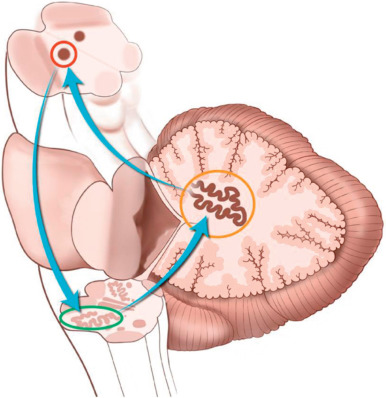Physical Address
304 North Cardinal St.
Dorchester Center, MA 02124
Hypertrophic olivary degeneration (HOD) is the result of an insult to the dentato-rubro-olivary pathway ( Fig. 22.1 ), otherwise known as the Guillain-Mollaret triangle (GMT). After an insult (infarct, hemorrhage, trauma, tumor, surgery) that disrupts the GMT, hypertrophic degeneration of the affected inferior olivary nucleus (ION) develops. The counterintuitive degenerative hypertrophy (rather than atrophy) of the ION can lead to confusion. Of note, lesions involving this functional circuit may produce palatal myoclonus, which is one of the few involuntary movements that do not extinguish during sleep. Other classic clinical findings associated with HOD are dentato-rubral tremor and ocular myoclonus.

Become a Clinical Tree membership for Full access and enjoy Unlimited articles
If you are a member. Log in here